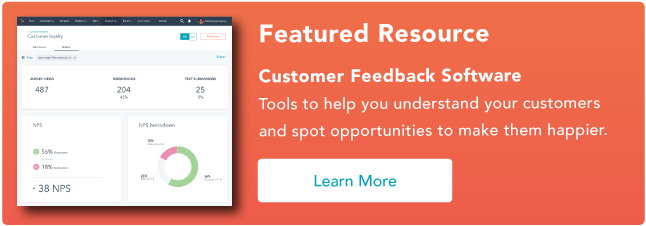We live in a competitive world where a single decision can make or break a business. That’s why it’s important to avoid guesswork and base decisions on credible data. And, among the various data collection methods at your disposal, surveys and polls are two of the most popular ones.

While at first glance they may seem alike, they have subtle differences. In today’s article, I'll talk about the difference between a poll and a survey, as well as their advantages and disadvantages. Let’s dive in.
Table of Contents
Polls vs. Surveys
Both polls and surveys are considered research methods for collecting data and insights from a group of people, but they differ slightly.
Polls ask the public for opinions about a specific issue, which often relates to politics or current events. They’re simpler and quicker to conduct.
Surveys have a wider range of applications. They’re used for market research, collecting feedback from customers, askinh employees for opinions, etc. They’re also more comprehensive and detailed than polls.
The choice between the two will depend on your objectives.
What are polls?
A poll is a research tool that focuses on collecting the answer to a single question. Most polls ask respondents to reply with a simple “yes” or “no,” or to choose from a closed-ended list of options.
They’ve become fairly popular on social media platforms like X (formerly Twitter) and LinkedIn, as they allow experts to quickly assess their target audience’s opinions and preferences.
While closed-ended polls are the most popular, there are other formats you can turn to as well:
- Rating Polls: Ask respondents to give a score on a scale from 1 to 5 (or 10). For example, an ecommerce store could ask “How important is free delivery in your choice of an online retailer?” with 5 being the maximum score.
- Numerical Polls: These require a number-based answer. These could be ranges (like $0-$1000) or a single digit (1, 2, 3, etc.). Such polls work well when asking about budgets for a specific product or how frequently someone engages in an activity each week/month/quarter.
- Ranking Polls: Here the respondent is asked to prioritize listed options from most to least important. For instance, a hotel might ask its target audience to rank factors like “price,” “location,” “dining options,” and “amenities” to inform its sales strategy.
- Multiple-Choice Polls: In this poll, the respondent doesn’t have to bet on just one answer. For example, a user experience (UX) specialist might be asked to name all the industries that they’ve designed for.
- Open-Ended Polls: These polls have a text field where participants can reply with a descriptive answer.
Pro tip: Turn to polls if you’re seeking an answer to a simple question that leaves no room for interpretation.
Advantages of Polls
Here are some of the benefits of using polls in your research.
Polls have a higher response rate.
This is directly linked to the minimal effort required on your respondents’ end. All they have to do is think about their answer to just one question, and they’re done.
Polls are a low-cost solution.
There are plenty of affordable customer feedback solutions out there. If you want to run your poll exclusively on social media, you could use free built-in tools on LinkedIn and/or X.
Polls are perfect for quick answers.
Polls are a great way to quickly validate an idea or theory among your target group. HR leaders use them to assess how many employees want to work from home, while sales teams may ask clients if they’re interested in a subscription service for a better per-item price.
Polls are easy to run through multiple channels.
The simplicity of polls means that it’s easy to collect insights via phone, email, social media, or even in real life. It’s also convenient for teams to merge data into a single source of truth — something that could be a challenge with lengthier questionnaires.
Polls create a sense of connection with your audience.
While it’s arguably the least obvious advantage of polls, asking your respondents for their opinions regularly helps nurture relationships and shows that you value their unique voices.
Disadvantages of Polls
Polls offer a low level of detail.
While not a disadvantage per se, polls might backfire if you use them for the wrong type of question. If it’s possible that some respondents could have an “it depends” answer, then you might be better off turning to a survey.
Respondents might not feel the gravity of their answers.
Due to their simple format, some people might not realize how important poll results might be for those who posed the question. Companies might alter their pricing schemes, while journalists might use them as part of their reports.
There’s a risk of incomplete results.
Polls do not create room for supplemental information. Therefore, these queries might result in incomplete data.
Sometimes, answers are non-exclusive; just because a person responded with option “A” doesn’t mean they wouldn’t use option “B.” For example, a gym attendee who answers in a single-choice poll that they like training during the workweek might also do so occasionally on Saturdays.
Polls have no contextual information on respondents.
Unless you decide to run your poll among a carefully selected group, you’ll lack firmographic and/or demographic information that could help you segment your audience.
What are surveys?
As mentioned earlier, surveys are a data collection method for gathering information on a variety of subjects. Whichever topic you have in mind, you can run a survey on it. There are different formats you can use, including paper questionnaires, phone interviews, and online forms. Some are more time-consuming than others.
Depending on how detailed you want your research to be, you can include different types of survey questions such as open-ended, closed-ended, and multiple-choice questions.
There are numerous surveys that you can choose from, including:
- Employee Experience Surveys: Here you ask your new hires and current employees about how they feel about the company, what they thought about the onboarding process, etc.
- Net Promoter Score (NPS): This survey asks how likely someone is to recommend your brand to others. It uses a scale from 0-10, and might include some follow-up questions.
- Customer Effort Score (CES): This score evaluates how easy or difficult it is for your clients to use your product or service. Again, it uses a rating scale from 1-10.
- Customer Satisfaction Score (CSAT): CSAT resembles CES, but instead of ease of use, it focuses on satisfaction.
- Market Research Survey: A market research survey is more complex than the abovementioned ones. It includes questions that help businesses understand the market they operate in, as well as their target audience. The information they collect guide decisions on product/service development, branding, and marketing campaigns.
Pro tip: Use surveys if you’re looking to get a mixture of qualitative and quantitative data fast and without spending thousands of dollars on research. Try to keep it short to avoid survey fatigue and improve your response rate.
Advantages of Surveys
Surveys have a number of advantages, here are the main ones.
Surveys are efficient.
Since you can send the same survey to a large number of people at the same time, it’s an efficient method for gathering insights. Also, you can distribute it online, which makes collecting responses quick.
Surveys are cost-effective.
When you compare surveys to other data collection methods, such as focus groups or phone interviews, they’re much cheaper. They require fewer resources in terms of people, time, and material.
Surveys have a big sample size.
You can survey as many people as you like, which makes your findings more credible. The more generic the topic, the larger your sample can be.
Surveys can be standardized.
As each survey has the same questions in the same format, you can standardize your findings, ensuring consistency and avoiding bias.
Surveys are easy to analyze.
The data you collect is easy to analyze, especially if you use the right survey software, which usually comes with data analytics capabilities.
Get Started With HubSpot’s Customer Feedback Software
There's an objectivity of insights.
As respondents answer questions anonymously, without any interaction with the researcher, they’re less prone to researcher bias, unlike in-person or phone interviews.
Surveys are scalable.
You can run surveys online, meaning you can quickly distribute them. This, in turn, means that they’re easily scalable. You can use surveys to conduct small-scale studies as well as run large ones on an international scale.
Disadvantages of Surveys
Surveys aren’t free from drawbacks. Here are some to note.
Surveys have limited depth.
The best surveys are short, i.e., they include a few of the most important questions. Otherwise, people won’t complete the survey. Also, since the majority of questions are usually closed-ended, with fixed responses, the depth of research is limited.
There’s the potential for bias.
It’s vital to formulate the questions correctly. Badly worded or misleading questions can lead to bias.
There’s limited context.
Unlike focus groups or in-person interviews, surveys fail to provide context. And, without it, respondents might not fully understand the questions and provide wrong or incomplete answers.
There’s a chance of survey fatigue.
Let’s be honest: Surveys are hardly ever fun to complete. So, it’s key to make them short. The longer they are, the higher the chances of respondents experiencing survey fatigue. This means either incomplete surveys or low response quality.
You have no non-verbal cues.
You can’t observe someone filling out a survey; people do it privately. In turn, you lack nonverbal communication like gestures or facial mimicry – and these say a lot about the respondent’s reactions and emotions.
Which should you use — surveys or polls?
Both surveys and polls can be incredibly valuable research tools. The difference between polls and surveys largely lies in the level of detail you wish to gain.
That said, it’s important to know which format to turn to whenever you’re looking to collect information from your target audiences.
Consider polls if:
- There’s just one, simple question you want to collect answers to.
- You don’t need to add follow-up queries to learn the “why” behind replies.
- Your respondents have limited time, and/or you have a history of a high survey drop-off rate in the past.
- Most questions aren’t going to be related to one another, nor are you pressured by time (i.e., you can break down a four-question survey into four separate polls over time).
Meanwhile, surveys might be a better choice if:
- You’re looking for in-depth answers to really get down to the reasons behind your audience’s responses.
- You want to ask several questions about the same topic.
- Your respondents have completed surveys willingly before.
- You want to use your findings to create or refine your marketing and sales strategy. For example, create sales personas and alter your pricing scheme.
Pick the format that supports your goals.
Running research among your target audience is the best way to inform your business. Whether you choose a poll or a survey depends on the subject you’re looking to inquire about.
If it’s a simple “yes” or “no” question, you can run a poll. If it’s a multi-question topic you’d like to gather information on, surveys might be the better solution.




-2.png)





